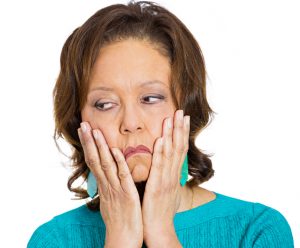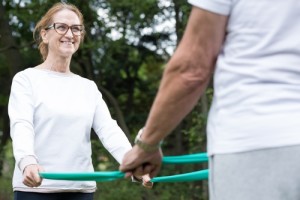
Before hormone balance can be a goal you need a clear definition of what it or hormone imbalance looks like! It’s never just hormones though is it? For the majority of women in midlife and beyond, there’s also a special condition, a joint issue, or a crazy schedule that also needs to be addressed.
If any of these describe you:
- You’re putting on weight lately no matter what you do
- You have belly fat even though you’re weight is OK
- You have cellulite on your thighs, belly, bum, or on your upper arms
- You can’t seem to develop any muscle tone in your legs
- You’ve got a saggy bum in spite of so many lunges and squats you can’t sit down
- You’ve turned up the exercise and eat carefully but still no results
- You’ve got saggy chest and neck skin
Plus:
- You have touchy joints from prior or current injuries
- You have had breast cancer surgeries
- You’ve had other invasive surgery or joint replacement
- You have a chronic condition
And potentially:
- You can’t sleep well
- Even if you do sleep you don’t wake up refreshed
- You have high levels of stress right now
- You’ve tested your hormones and you’re “normal” but don’t feel it
- You still don’t have any idea how to exercise “normal” or not
- You have depression or anxiety
- You’re taking medications for the above or other things with side effects
- Your digestion is off (even if you thought that was “just me”): You don’t poo every day at least once (more is better); You have rabbits or pudding instead of snakes, You have gas or bloating you just tolerate
And finally:
What you used to do doesn’t work any more.
Then this is definitely for you… if you want to change. Changing is the obstacle for a significant percent of women that express interest in change. If you aren’t willing to change habits, change beliefs, change what you eat and when, change how you exercise and when, then this will just be another blog. No set of exercises, videos, menu plans will ever help until you decide you are 100% in.
 Throw Away the Textbook
Throw Away the Textbook
Exercise for hormone balance is not your textbook exercise. “I’ve never heard that before,” is not a good excuse to dismiss something as true. How many research studies did you read last week about menopause, hormones, and exercise? They’re at anyone’s fingertips in today’s world. So holding onto old ideas without researching for yourself or finding a voice you trust instead of going by an outdated text is irresponsible. A published textbook is outdated by the time it goes to print. Research in this area is accelerating. Get help and get up to speed on research on hormone balance.
Approximately 6000 women a day go into menopause right now. That’s 2 million a year. Yet, 39% of all sports medicine and exercise research features females at all. It’s safe to say a small slice of that focuses on women in perimenopause, menopause, and post menopause and the hormones that influence and are influenced by her exercise.
It’s time to change the way we prescribe exercise during the change. If a woman begins perimenopause in her mid 40s and lives to her mid 80s she spends 40 years in menopause. Shouldn’t we be optimizing exercise for this large population of currently 38 baby boomer women, 25 million Gen X women and coming soon, an even larger number of millennial women? Fitness is either going to open a new level of health for women, who ultimately influence 80% of household decisions including health, or fail miserably. Conventional exercise prescriptions contribute to hormone imbalance.
Your hormone balance exercise
Start lifting weights focused on major muscle groups. Even if you swear by functional movement patterns, insulin, cortisol, and the half dozen more hormones that influence her fat and health are key for reducing risk of disease. Even if you want to tone those arms, you want to start with major muscle groups. Even if you want a flat belly, start with major muscle groups. Stop long slow exercise sessions and long endurance activity.
Increase your protein at every meal and eat regularly. Get to bed early and make sure you control your environment. If you love your wine or nightcap, you’ll want to stop that. All of these things kill testosterone, a key hormone for building lean tissue and libido. Testosterone gives you a kick of confidence too also important for libido.
These are but a few scenarios of exercise changes you can make for more hormone balance. Each woman has a unique set of health history, physical status, signs and symptoms that make her unique.
Excerpt from the original blog post by Debra Atkinson for Flipping 50
Debra Atkinson is the #youstillgotitgirl who is flipping 50 and changing the way thousands of women think about their second half. She’s the host of the Flipping 50 TV Show and the Flipping 50 podcast. As a master personal trainer, strength and wellness coach with over 30 years fitness industry experience, she works with women who are pro-aging with vitality and energy. She is an international fitness presenter, author of hundreds of articles and multiple books. Visit her website, flippingfifty.com
